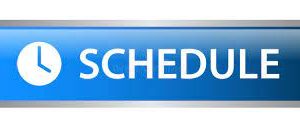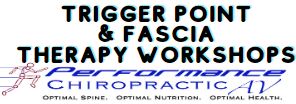Therapeutic Massage for Pain Management
Massage therapy is a natural approach to pain management. A survey released by the American Massage Therapy Association (AMTA) in 2014 reveals that an increasing number of consumers are seeking massage specifically to manage and relieve pain. Position statements that are approved by AMTA and backed by peer-reviewed research have demonstrated that therapeutic massage relieves pain from a variety of causes, and may reduce the need for pain medication.
Sources of Pain
Pain is experienced as discomfort, distress, or suffering due to the stimulation of sensory nerves, especially pain sensors, called nociceptors. Pain is associated with most illness and injuries, both temporary and chronic.
Pain is experienced in temporary situations like healing from accidents and surgery, and with orthopedic injuries such as sprains and tendonitis. Discomfort and pain may also be a side-effect of treatment for diseases like cancer. Inactivity while recovering from an illness or injury, or under-activity due to a chronic condition, can result in bodily discomfort from poor circulation.
Among the many potential causes of chronic pain are persistent muscle tension, poor blood flow, overuse of specific muscles, chronic swelling or edema, poor tissue condition from old injuries, and joint diseases such as arthritis. A chronic painful condition called fibromyalgia syndrome (FMS) is characterized by widespread muscle pain and stiffness, and tenderness at specific body sites.
Anxiety and worry can worsen the perception of pain regardless of its cause. In some people, emotional pain and distress are experienced as physical pain, or can lead to muscle tension with painful results. Many of the common causes of pain and discomfort can be alleviated with massage.
Limits of Pain Medication
“Pain killers” are often the first choice of treatment for painful conditions. But many of these medications do not address the causes of the pain. They may also be undesirable as habit forming, and may react badly with other drugs being taken. Some pain medications, although safe if taken for a short period of time, become dangerous if taken over a long period for chronic conditions.
Massage can be an effective complement or natural alternative to pain medication. In one pilot study of post-surgery patients, the need for medication dropped on the day they received massage.
Massage Eases Pain
The hands of a skilled massage therapist can help normalize body tissues and ease pain by relaxing muscle tension and reducing tissue swelling. Special massage techniques can be applied to improve lymph breathing, slower heart rate, lower blood pressure, circulation in those suffering from lymphedema, and sooth irritated nerves.
A relaxing massage stimulates the parasympathetic nervous system and induces the relaxation response. This anti-stress response has benefits like deeper increased circulation, decreased muscle tension, strengthened immune system, and mental calming. Massage helps you relax so that your body can heal itself faster.
Studies confirm that massage reduces the psychological pain of anxiety and depression, promotes restful sleep, and helps those who suffer from fibromyalgia.
Describing Pain to Your Massage Therapist
The answers to the following questions offer clues to the source of the pain, and help your massage therapist plan your session and choose appropriate techniques.
Where do you feel the pain?
- Can you describe the pain, e.g. sharp, bright, burning, shooting, dull, aching?
- How intense is the pain, e.g. mild, moderate, severe?
- Does it move or refer to other areas?
- How long does it last?
- How often does it occur?
- What aggravates the pain?
- Does anything relieve the pain?
- Are there any other symptoms, e.g. muscle weakness, numbness, tingling, nausea?
- Are you taking medication for the pain? Does it help? Have you taken it recently?
- Has a health care provider ever diagnosed the cause of the pain?
Research specifically cites massage as effective for relieving low back pain, tension headaches, post surgery pain and muscle spasms, and the perception of pain in cancer patients. The 2014 AMTA annual survey shows that 92% of Americans surveyed believed massage can be effective in reducing pain. The compassionate touch of massage offers human comfort to those suffering pain and distress.
Natural Complements to Massage
The following can be effective complements to massage: specific exercises or stretches for tense muscles, hot packs, cold packs, infrared heat lamps, whirlpool, steam room, or hot shower. Topical preparation like lotions are sometimes used for muscle soreness, and produce hot or cold sensations that feel soothing. Many massage therapists use aromatherapy (i.e. use of essential oils), which can also be effective in soothing aches and pains.
Your massage clinic or spa might have these therapies available, or they may be suggested for pain relief at home. Getting enough rest, drinking plenty of water for good hydration, eating nutritious foods, and being physically active are foundations of healthy living and an effective pain management strategy.
Before Receiving Massage
When you are in severe or chronic pain always see a health care provider for diagnosis before receiving massage therapy. Specifically ask the provider if massage might be helpful or harmful. Research related to massage for specific conditions can be located on the Massage Therapy Foundation website [www.massagetherapyfoundation.org].
References:
- American Massage Therapy Association (AMTA). (2014) “Massage Therapy Increasingly Sought for Pain Relief”. Press Release. AMTA, October.
- AMTA Approved Position Statements.
- Dafney, N. Neuroscience Online, Chapter 6: Pain Principles.
- Griffith, Brenda (2003) “Massage has a role in pain management”.
Practical Pain Management, January/February issue.
- Castro-Sanchez, A.M., Mataran-Penarrocha, G.A., et al (2011).
Benefits of massage-myofascial release therapy on pain, anxiety, quality of sleep, depression, and quality of life in patients with fibromyalgia. Evid Based Complement Alternat Med. 2011:561753.
- AMTA (2014) “Consumer Survey Fact Sheet..
- What the Science Says About the Effectiveness of Massage (2013). National Center for Complementary and Alternative Medicine.




FOLLOW US!